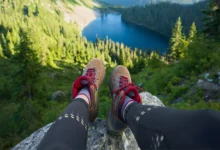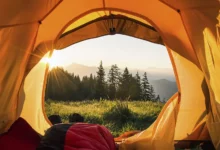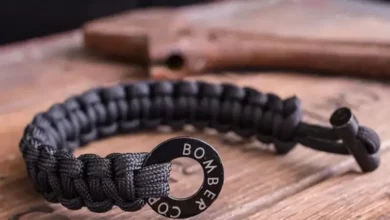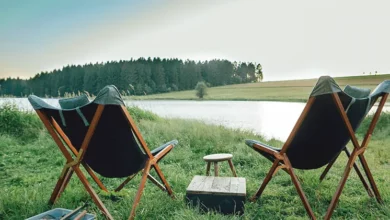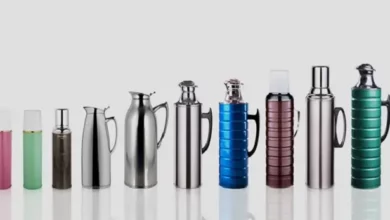Guide to buying shoes | Best Mountaineering Shoes
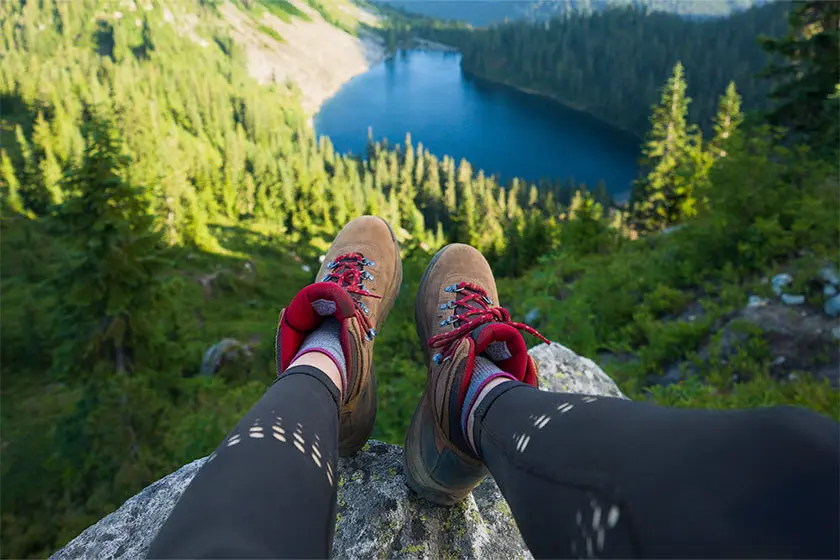
Climbing shoes are one of the most important equipment required for climbers to be selected based on the type of activity, season, and climatic conditions.
Mountaineering is one of the healthiest and most enjoyable amusements in the world that has many fans; to do this sport, you need to have enough equipment. The feet are called the second human heart, and mountaineering is one of the sports in which the health of the feet is more important; hence, climbing shoes are the most basic and important climbing equipment.
Mountaineering shoes ensure the health of the feet and body, and climbing mountain paths and slopes is not possible without standard and safe shoes. In choosing the right climbing shoes, criteria based on the type of activity, climate, climbing season, and specialized features such as flooring, thermal insulation type, and type of moisture insulation are important and should be considered when buying.
Mountaineering shoes
Walking shoes
Walking shoes, bare-legged and very light, with short heels and a slightly flexible outsole are suitable for simple trails and daily walks that some hikers also use for long walks and light trails. Because this shoe does not protect the ankle, it is not suitable for rocky paths.
Walking shoes (Trekking)
Climbing shoes include lightweight shoes, medium or high heels, and slightly flexible outsole that are only suitable for one-day hikes and short trekking trips with light loads in three seasons spring, summer, and autumn. The top of these shoes is usually made of leather or waterproof fabric, but as a solid climbing shoe, it lacks durability.
Mountaineering shoes
Semi-heavy climbing shoes are shoes with slightly flexible outsole and long legs (14 to 19 cm) that protect ankles well. These shoes are suitable for three-season multi-day climbs and if there is a Gortex layer, for one-day winter climbing.
High Mountaineering Shoes
Single-wear shoes are heavy and very strong shoes for mountaineering in that the outsole is not flexible but has the ability to install crampons. These waterproof shoes are only suitable for climbing in snow and ice and winter climbs of less than 5,000 meters and cause blisters if used in non-snowy places. Heavy climbing shoes do not have a sewing cover with yarn, the top of the shoe sticks to the sole with melting or glue stitching and has an expiration date that should be taken into account when buying.
Expedition Heavy Climbing Shoes
Heavy climbing shoes are two coats, a very strong shoe for mountaineering that its outsole is not flexible, but has the ability to install crampons. This is called double-clad shoes because it is structurally divided into two small and large shoes. The small shoe is the size of the mountaineer’s foot and does not have a strap that is used to close the glue and then fits into the larger shoe. The climber enters the tent during the break with small shoes. These shoes are suitable for climbing peaks above 7,000 meters in spring and summer, climbing peaks less than 7,000 meters in autumn and winter, and ice climbing at high altitudes.
Himalayanoord shoes (expedition)
Himalayaanvrdy shoes are three-layered, heavy, and very strong for climbing the sole is not flexible, but has the ability to install crampons. This shoe is similar to double-shoe shoes, except that the third coat is considered a high gaiter that is placed on top of the shoe and covers the entire surface and around the shoe. This shoe is designed for heights of 8,000 meters in the Himalayas and climbing to altitudes above 7,000 meters in winter.
Climbing shoes
Climbing shoes also called rock linen, are produced with special shapes and special materials, and the position of the foot in it is such that it facilitates the placement on thin edges and is used for rock climbing, wall climbing, and rock climbing inside the hall.
Ice Climbing Shoes
Ice climbing shoes resemble rock climbing shoes and are very light, but have permanent crampons attached to the shoe’s soles that are used for racing and sprint climbs on ice rocks.
Suitable size of climbing shoes
The appropriate size of the climbing shoes is such that there is enough movement for the fingers, toes, and ankles of the climber, and during long hours of mountaineering do not apply pressure to these members; this suitable size, only by wearing and walking is determined
The best time to buy climbing shoes is in the afternoon hours; in these hours the feet are in their largest size due to swelling. Also, due to the thickness of the usual mountaineering socks and also the wristiness of professional shoes, the proper size of the mountaineering shoes is usually larger than the size of everyday shoes.
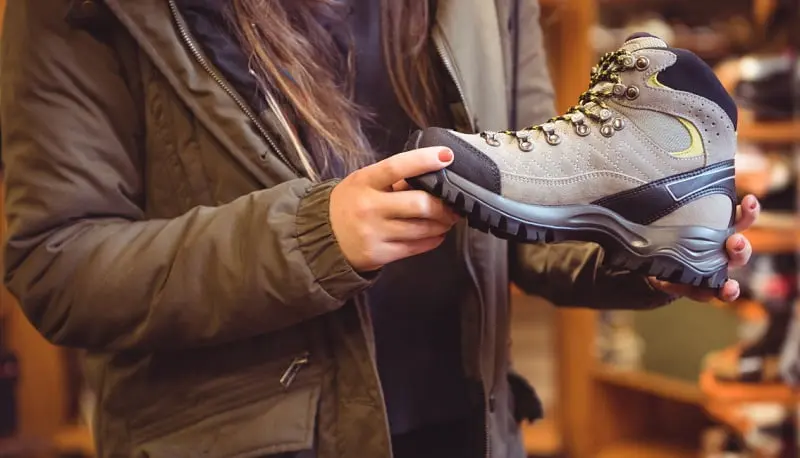
Choosing the size of climbing shoes
- Climbing shoes should not be too loose, as it creates skin blisters.
- Climbing shoes are not too tight or too tight, as they push the feet and damage the nails and nail bed.
- The ankle is not under pressure.
- It is best to wear a thick pair of socks when shopping and choose a larger size to allow blood circulation to your feet freely.
- Wear the shoe for 10 minutes and walk; walk up and down stairs inside the store, or walk down the ramp.
- If you are using medical insoles, it is best to carry insoles when choosing the size of the climbing shoes to ensure the complete comfort of the shoes along with the medical insoles.
Mountaineering shoes and insoles
The surface and insoles of shoes form the structural part of a shoe and the type of consumables for making them is of particular importance in terms of strength, safety, and comfort of the foot. In the past, leather was used more than leather in the manufacture of shoe surfaces, which is not very common today, and leather shoes have been replaced by new designs and procedures of synthetic fibers and new synthetic materials. The development of shoe manufacturing has brought more safety and comfort to climbers.
Types of shoes
- Natural leather
- Grainy Ashbalt leather: It is created from the crack of the inner rough part of cow leather and paired with nylon or nylon nets to provide high breathability. It is inexpensive and has little resistance to water and abrasion.
- Nebuc leather: a kind of grained leather that is relatively flexible and resistant to water and wear.
- Artificial leather: a type of leather with polyester and nylon that is lighter than other leather. It opens up faster, dries quickly, is inexpensive, and decays faster due to sewing stitches.
- Gore-tex fabrics: insulated water, wind, and moisture-proof as well as breathable.
- Sympatex: Wind and moisture insulation and breathable.
- Kevlar: A recombinant material or shock absorber fabric.
- Thinsulate: It has the warmth of the feet and is suitable for winter shoes.
- Fiberglass: Among Iranian climbers is known for plastic and is not suitable for mountaineering at all.
Requirements for climbing shoes
- Be waterproof.
- Allows the feet to sweat and breathe freely.
- It has a resilient capacity.
- So that it is soft and flexible.
- Heat insulation is insulated.
- Straps on the top of the shoe continue to close to the ankles to better seal and protect the ankles.
Shoe Insoles
Shoe insoles like a layer keep the feet away from shock and greatly determine the firmness of the shoe. This strength means greater comfort and stability for long trekking on rocks and rugged areas. Solid shoes prevent damage to the foot as a result of any twist on a rock or tree root.
The most common raw material is ethylene-vinyl acetate (EVA) and polyurethane. Ethylene-vinyl acetate (EVA) is comfortable, lightweight, and inexpensive and is used in providing insoles of various densities to provide tighter support on the front of the foot if necessary. Polyurethane is generally firmer and more durable and is widely found in climbing shoes.
Specification for climbing shoe insoles
- By creating the necessary friction, be anti-slip.
- Prevent the foot from slipping inside the shoe and therefore the possibility of ankle sprain.
- It has high resistance.
- Depending on the type of shoe, it has the right flexibility.
Indoor Mountaineering Shoe Backup
To increase the strength of the weight bearing on the soles of the shoe, a layer with a thickness of three to five millimeters is pressed between the inner layer (the bottom) and the outer layer (the outsole ). The length of these layers varies; some of these supports cover the entire length of the insole while others cover only half of the insoles. If this layer is made using materials such as EVA, it will prevent the pressure from hitting the ground on the feet and prevent the legs from tiring. The use of the support layer helps to retain heat and protects the foot from the cold.
Climbing shoe sole
The shoe sole is the outer part of the shoe that is in contact with the ground, preventing damage to the foot, and making the shoe more durable. Some of the shoes are so beautifully designed that they are the reason to buy shoes. The sole of a mountaineering shoe is usually made up of several layers, and rubber is used in the outsole of all climbing shoes. Sometimes additives such as carbon are added to the climbing shoes to strengthen their strength.
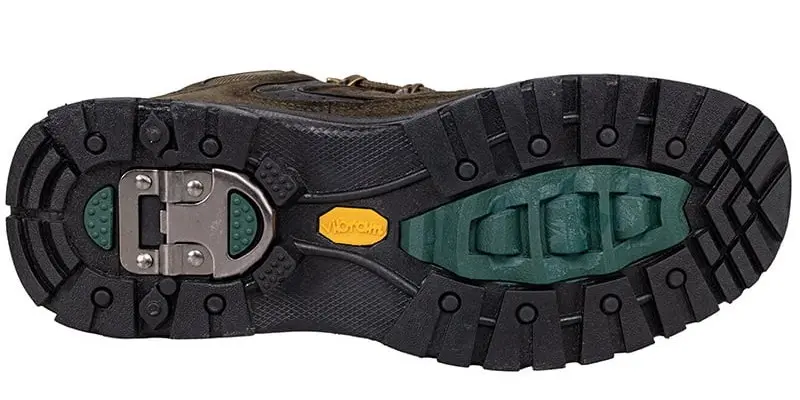
Requirements for climbing shoes
- Cumin must have dentin (dent) suitable for the environment used.
- It has high friction.
- Resistive and sustainability are appropriate.
- Depending on the type of shoe used, flexible or hard.
Foot Shoes Vibram
Vibram is an Italian shoe brand that is globally licensed. Vibram stands for Vitaly Bramani, the designer of this type of cumin. This shoe sole is also known as “Vibram Rubber” or “Vibram” and is produced today in China, Brazil, Italy, and the United States.
The purpose of Vibram sole is to design shoes suitable for passing through hard and rocky areas. Many shoe brands use Vibra outsole or order their outsole to Vibram in some types of shoes. Vibram outsole is used in the process of producing climbing shoes and work boots.
Rubber’s shoe
Rubber is another type of climbing shoe sole that doesn’t break and doesn’t wear at all. Besides the high friction and high strength, these cumin have good flexibility. Rubber rubber has excellent resistance to water penetration.
Termo Shoe Sole
Termo’s shoe sole is highly resistant to slip and wear and allows walking on slippery surfaces with its high quality. It is a thermal insulation so it is suitable for summer and winter. Thermo cannot be broken, is lightweight, and is suitable for walking.
The most important thing is to buy mountain shoes.
Shoes are one of the most basic and important equipment required for mountaineering. Suitable shoes for any climbing program should be selected based on the type of activity, season, climatic conditions, and specialized characteristics such as the material, thermal insulation type, and moisture insulation type.
- Suitable shoes for climbing programs (summer climbing, winter climbs, Himalayanodi, rock climbing, ice climbing, etc.)
- Pay attention to the strength and material on the surface of the shoe (waterproof, breathable).
- Take into account the strength of the shoe outsole
- The shoe supports the ankle and prevents it from twisting.
- The shoe toe should be firm and firm to protect the toes. When shopping, hit the wall with shoe claws.
- The weight of each shoe should be around 300 to 600 grams so that the person does not feel heavy when walking around the foot.
- Be careful when choosing the size and comfort of the foot inside the shoe.
- The best time to buy shoes is in the afternoon because the feet are in their largest size due to swelling.
- Look at the history of shoe production. Adhesives used in shoes have expiration dates of two to five years.
- Choose from the top of the mountainous brands.
- Visit reputable stores to buy well-known mountain shoe brands.
- Pay attention to the shoe guarantee.
Best Brands of Mountaineering Shoes
Salomon Brand
Salomon was founded in 1947 in the heart of France. Francis Salomon started the company by producing blades under ski shoes in a small workshop, and after about 75 years, Salomon now produces a wide range of sports products.
Salomon is now owned by Amer Sports Group, headquartered in Helsinki, Finland. The brand offers a variety of products for climbing, skiing, snowboarding, hiking, and running. Mountaineering shoes of this brand with high-quality construction, safety, and protection of the feet, bumper, lightweight, and reasonable price, attract foreign and Iranian climbers.
Brand Lowa
Bavarian brand Lua was founded in 1923 by producing traditional shoes with European raw materials. Leather, fabrics, and other materials used at Lowa are all manufactured under the strictest environmental standards in the world. The company is one of GoreTex’s first shoe manufacturers. Lua shoes have a lot of strength and are classified based on use such as hiking and mountaineering. The brand is famous for its mountain shoes and strappy ski shoes.
KEEN
The brand was started in 1999 by Martin Kane in Portland, USA, designing an iconic blue sandals and shoes for water sports, and then went on to produce other sneakers such as hiking as well as bags and clothing. The company moved its headquarters to Portland, Oregon, in 2006 and grew rapidly. Affordable KEEN boots are popular among climbers looking for comfortable shoes for wide feet.
Brand Oboz
Abuz brand is one of the best brands of waterproof, American-born mountaineering shoes that does not rely solely on GORE-TEX, but uses its proprietary B-DRY system that not only prevents water from entering the shoe but also has the detergent properties to keep the feet dry for several days of climbing. The Oboz brand uses Vibram cumin with thick, multi-directional clamps to make the climber move on any terrain without feeling bumps underfoot.
Brand of La Sportiva
Italian brand La Sportiva, famous for its mountaineering shoes and ski boots, was founded in 1928 by Narciso Delladio. He produced boots for farmers and lumberjacks before helping to provide mountaineering boots for Italian soldiers during World War II. Today, the brand is known for sponsoring some of the world’s top athletes, such as rock climber Tommy Caldwell. Lasportiva’s hiking boots are known for excellent performance at a modest price.
La Sportiva shoes offer great safety against hazards and the shoe cover provides great protection against stones, branches, and wear. The gaiter design in Lasportiva’s shoes is such that it keeps the feet warmer against snow and cold. The brand offers special shoes for skilled climbers who encounter technical terrain. This type of shoe includes flexible gaiters at the ankles that cover more of the leg and have an adjustable tab to fit each person.
Scarpa Brand
SCARPA is a specialized Italian shoe brand that started in 1938 in the Asolo region of Montaublina. The name of the brand means “The Association of Shoe Manufacturing in the Asolo Mountain District” (SCARPA) (Società Calzaturieri Asolani Riuniti Pedemontana Anonima). Today, Scarpa Company is known as the manufacturer of the most desirable and durable climbing shoes in the world and has a wide range of mountain sports shoes.
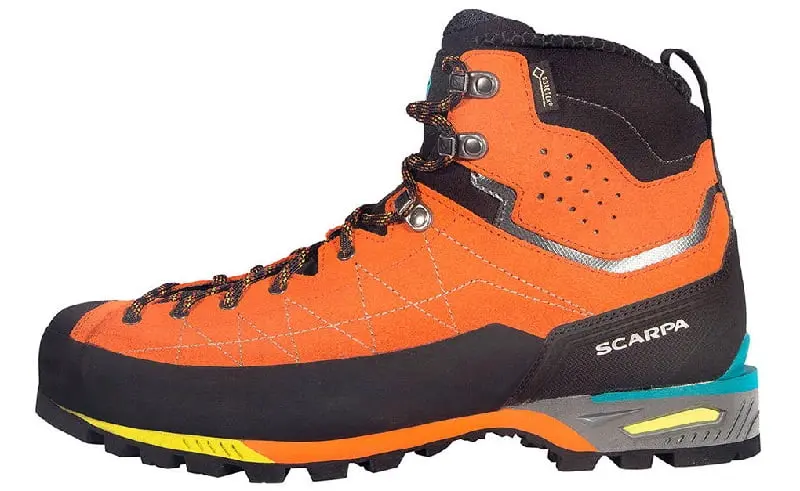
The North Face
The North Face brand is an American clothing company that manufactures footwear, clothing, and sports equipment. The company was founded in 1968 by Douglas Tompkins and Susie Tompkins Bell in California and is now owned by VF Corporation. The mountaineering shoes of this brand are of great quality among foreign and Iranian climbers.
Brand (Columbia)
The Columbia brand was founded in Portland in 1937 by the Garrett Boyle family. The brand provides hiking, fishing, hunting, camping, golf, and climbing products with high standards. In Iran, Colombia brand short and high heels climbing shoes are very popular.
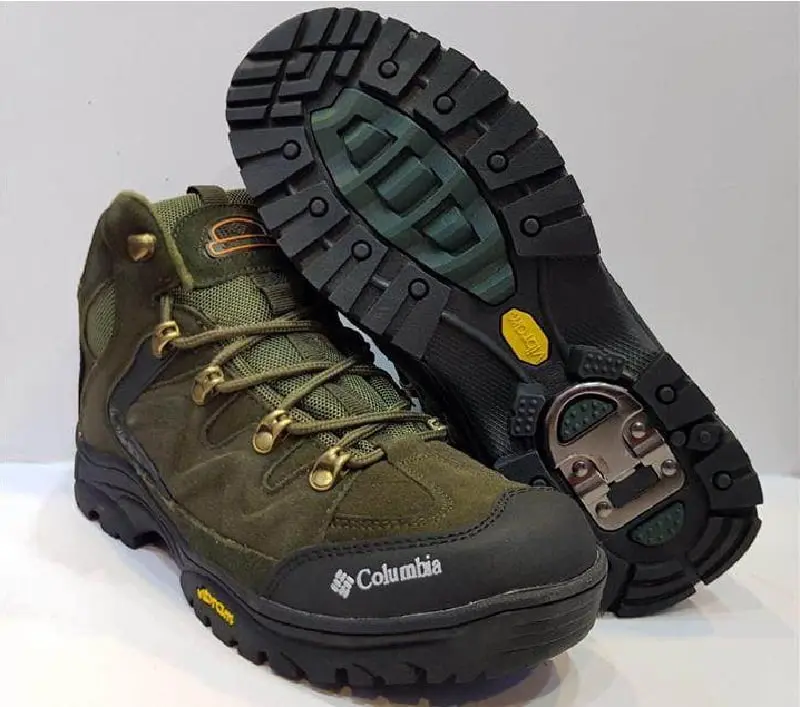
Cater Pillar Brand
Founded in 1925, Cater Pilar is an American heavy-industry corporation that designs and manufactures diesel engines, heavy equipment, agricultural machinery, trucks, and apparel and is known as the world’s largest manufacturer of construction machinery. Cater Pilar has produced boots, mining safety shoes, and mountaineering shoes with a high degree of resistance and safety. The high quality of these products is the reason for the popularity of this brand.
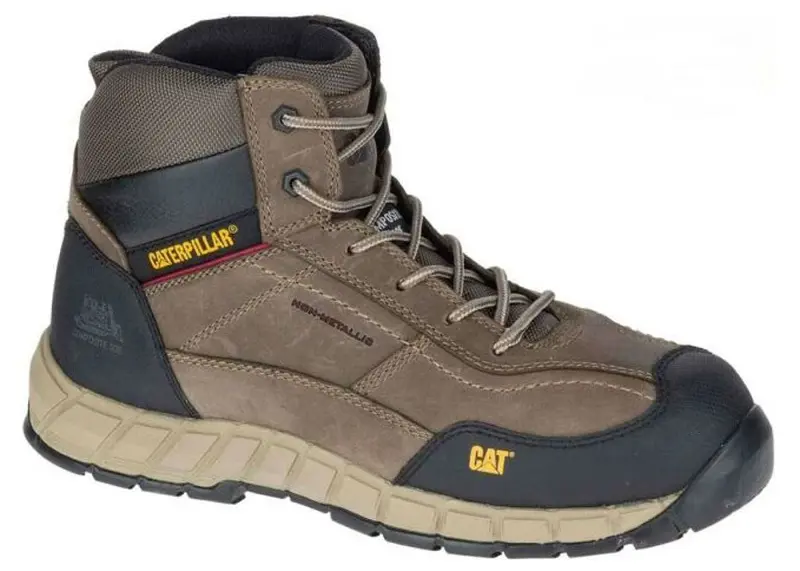
Brand Name (Karrimor)
Crimmore was founded in 1943 in Lancashire, England, after World War II. The company is today a manufacturer of sports shoes and equipment and equipment for climbing, hiking, and nature walks that with its special technology offers quality products that in addition to style have high resistance.
MERLE BRAND (MERREL)
Merle Brand is an American mountaineering shoe manufacturer founded in Rockford, Michigan in 1981 with the creation of a hiking shoe line. The brand’s products include hiking, hiking, hiking, and hiking shoes. Merle’s brand brings both durability and comfort by producing a variety of lightweight and affordable hiking shoes. The brand’s products entered Asia in 1987 and were widely received.
Brand (HUMTTO)
The Hamto brand is one of the emerging Chinese brands that has stepped into the field of shoes and sports apparel with the power of its quality products and affordable prices and has been able to achieve a good reputation in a short time. Hamto shoes cover a wide range of hiking, hiking, and mountaineering shoes for men and women. The variety of colors and designs in Hamto shoes enables you to choose from the brand’s short, medium-legging, or long-legging models according to your needs.
How to take care of and maintain mountain shoes?
Mountaineering shoes, like other sporting and climbing equipment, need their own care principles to increase their longevity, beauty, and quality. These principles include cleaning tips, maintenance tips, and waterproofing tips that depend on the type of climbing shoes and it is best to use the footwear brochure or get the necessary information from the manufacturer’s site.
Cleaning Shoes
To clean the climbing shoes, first, untie the shoe straps and remove the inner shoe insoles. Remove mud, mud, and dirt sticking to the shoes with a brush. Now clean the shoes with a soft toothbrush, soft brush or sponge, and cold water. Be careful not to let water into your shoes. Leave the shoes in normal temperatures to dry. Do not use heat, fire, and direct sunlight to dry.
Shoe Care
Then take the cord and bring it to the next nail (you can go on the inside or the outside of the design)، pull taut، then loop the cord around the nail، and repeat for each nail until you’ve completed the other shape of the design. Make sure to fill the inside of the shoe using dry cloth or paper until the next use, and tie the shoe to maintain its shape and shape. Store shoes in a dry place with a moderate temperature and avoid putting them in plastic and dark places.
Climbing shoes, especially leather shoes, if not properly maintained, will stiffen and crack, in which case water penetrates into them. To avoid this, use special protective materials and waxes. Leather shoes can be greased with camel or sheep tallow and cover the sewing area with honey wax so that water does not enter the shoe.
Waterproof Shoes
Entering water and moisture into the shoe is annoying and reduces the shelf life of the shoe. To prevent this action, you should use a waterproof spray. This spray lacks web color. Read the instructions on the spray, pay attention to the warnings, and make sure your shoe matches the spray so that the shoe doesn’t hurt.
Spray the waterproof solution from 15 to 20 cm on the shoe, allowing 30 minutes to dry completely. This way your shoes will become waterproof. If your climbing shoes are made of leather, use solid waterproof materials such as waxe.

